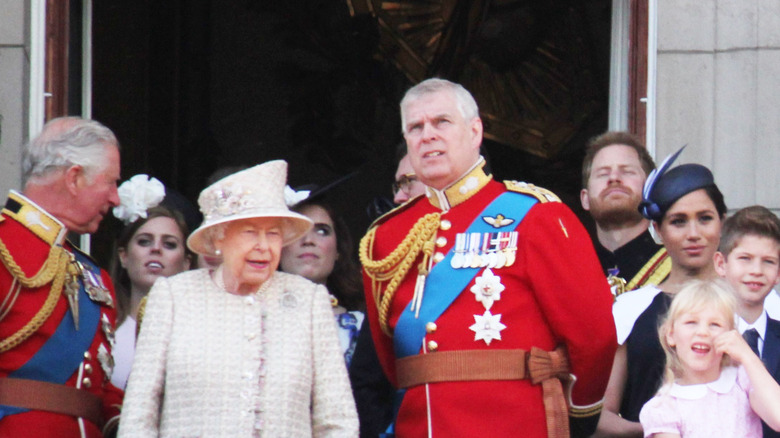The Surprising Reason The Royal Family May Not Actually Be Royalty
It is fair to say that circa 2021, the world has a slight obsession with the British royal family. From TV series like "The Tudors" and "The Crown" to movies like "The Queen" and "The Other Boleyn Girl," we can't seem to get enough. We aren't just obsessed with guys like Henry VIII who liked to get divorced (a lot) or Alfred the Great, the first Anglo-Saxon king. We can't get enough of the modern royals, either. The current queen, Elizabeth II, has ruled the U.K. for 69 years, per the Independent. While she is beloved by her subjects and has had a successful reign, a historical discovery underneath a parking lot could potentially turn it all upside down.
One of history's greatest mysteries was finally solved back in 2012 when archeologists found the remains of King Richard III. This is the infamous King Richard who was disparaged by Shakespeare in his play "Richard III" and supposedly involved in the disappearances/murders of his nephews, the Princes in the Tower, according to Biography. Though he is usually portrayed as the villain, the mystery surrounding the disappearance of his body after he was defeated by Henry Tudor was too intriguing to ignore, and the search was on.
DNA changed what we thought
Five-hundred years later, when his bones were finally unearthed, science needed to verify that they were in fact the remains of Richard III. According to Express, DNA samples were taken from Richard III's indirect descendants to confirm his identity. Genetic testing did confirm that they were in fact his remains, due to matches in the maternal line. It was the genetics on the male side that appeared to have been multiple discrepancies.
Per The Guardian, this inconsistency in the male line reveals a couple of things. Firstly, the images we see that are of Richard III no longer seem to be entirely accurate. Most paintings we see depict him with brown/dark hair and dark eyes. However, his DNA appears to show that there is nearly a 90% chance that he had blue eyes, and also a high probability that he was also blond, especially as a child. Though DNA now appears to confirm that his physical appearance was different from what we thought, what his genes do not show is what could be a potential game changer for the royal family.
When examining Richard III's DNA, a break in the Beaufort line of descent was discovered. The Beauforts are a branch of the royal family that claim to descend from both the Plantagenets and the Tudors, and are also cousins of the Windsors, who currently rule. Without getting into all the complicated details, these breaks in the DNA chain theoretically could sow doubt on the Windsor line's claim to the throne. Luckily for the royal family, it would take a lot of genetic testing and digging up lots of historical people in order to confirm this theory. It is likely we will never truly know the truth.

